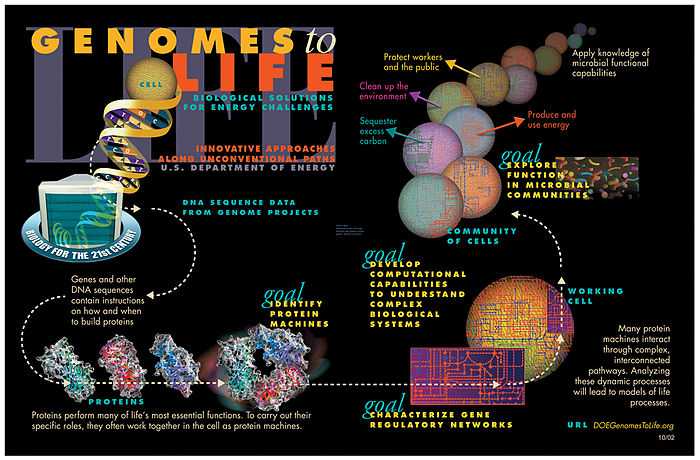Mathematical biophysics
Mathematical biophysics is a subfield of both biophysics and mathematical biology focusing of physical and physico-chemical mechanisms involved in physiological functions of living organisms, as well as the molecular structures supporting such physiological functions. The earlier stages of mathematical biology were dominated by mathematical biophysics, that was then described as the application of mathematics in biophysics, often involving specific physical/mathematical models of biosystems and their components or compartments.
Specific research areas of current interest in mathematical biophysics are, for example:
- Complex systems
- Quantum biophysics and biochemistry
- Automata theory,
- Cellular automata,
- Tessellation models[1]
- complete self-reproduction, * chaotic subsystems of organisms,
- Relational biology and organismic theories[2][3].
A published monograph that included 390 references to peer-reviewed articles in mathematical and computational biophysics by a large number of authors is currently available for download as an updated PDF [4][5]
Syllabus
A syllabus of studies in mathematical biophysics at the university level may include a combination of courses, such as:
- Molecular biophysics,
- Photosynthesis and photosythetic mechanisms
- physico-chemical models of nerve conduction
- Muscle contraction mechanisms
- Quantum physics,Quantum mechanics, Quantum field theory
- Quantum biophysics
- Quantum biochemistry
- Quantum genetics
- Molecular spectroscopy: FT-IR, FT-NIR, NMR,EPR, VCD, FCS, FCCS
- X-ray diffraction and Electron microscopy
- Biostatistics, Graph theory, Algebraic topology
- Biocybernetics,
- Nonlinear dynamic systems,
- Nonequillibrium thermodynamics,
- Statistical mechanics
- Bioinformatics
- Radiological imaging: MRI, CT, PET
- Nuclear medicine
See also
- Biophysics
- BioCybernetics Wiki, a vertical wiki on biomedical cybernetics and systems biology
- A list of references for applications of category theory in relational biology.
- BioSystems
References
- G. Forgacs and S. A. Newman, Biological Physics of the Developing Embryo. C.U.P., 2005. ISBN 0-521-78337-2
- A. Goldbeter, Biochemical oscillations and cellular rhythms. C.U.P., 1996. ISBN 0-521-59946-6
- L.G. Harrison, Kinetic theory of living pattern. C.U.P., 1993. ISBN 0-521-30691-4
- Hertel, H. 1963. Structure, Form, Movement. New York: Reinhold Publishing Corp.
- N.G. van Kampen, Stochastic Processes in Physics and Chemistry, North Holland., 3rd ed. 2001, ISBN 0-444-89349-0
- I. C. Baianu., Computer Models and Automata Theory in Biology and Medicine., Monograph, Ch.11 in M. Witten (Editor), Mathematical Models in Medicine, vol. 7., Vol. 7: 1513-1577 (1987),Pergamon Press:New York, (updated by Hsiao Chen Lin in 2004 ISBN 0-08-036377-6
- S.H. Strogatz, Nonlinear dynamics and Chaos: Applications to Physics, Biology, Chemistry, and Engineering. Perseus, 2001, ISBN 0-7382-0453-6
- N.G. van Kampen, Stochastic Processes in Physics and Chemistry, North Holland., 3rd ed. 2001, ISBN 0-444-89349-0
- L.A. Segel, Modeling dynamic phenomena in molecular and cellular biology. C.U.P., 1984. ISBN 0-521-27477-X
- Vogel, S. 1988. Life's Devices: The Physical World of Animals and Plants. Princeton: Princeton University Press.
External links
- Statistical Applications in Genetics and Molecular Biology
- Département:Biophysique
- PlanetPhysics.org MediaWiki v.1.17 website
- The International Journal of Biostatistics
- Theoretical Modeling of Cellular Physiology at Ecole Normale Superieure, Paris
- Mathematical and Theoretical Biology on Wikipedia[6].
- Systems biology on Wikipedia
- TUCS Computational Biomodelling Laboratory
- Nagoya University Division of Biomodeling
- ESMTB: European Society for Mathematical and Theoretical Biology
- The Israeli Society for Theoretical and Mathematical Biology
- Société Francophone de Biologie Théorique

Notes
- ↑ Modern Cellular Automata by Kendall Preston and M. J. B. Duff http://books.google.co.uk/books?id=l0_0q_e-u_UC&dq=cellular+automata+and+tessalation&pg=PP1&ots=ciXYCF3AYm&source=citation&sig=CtaUDhisM7MalS7rZfXvp689y-8&hl=en&sa=X&oi=book_result&resnum=12&ct=result
- ↑ http://cogprints.org/3674/1/ORganismic_supercategories_and_qualitative_dynamics_of_systems_final3.pdf Organismic Supercategories at Cogprints
- ↑ "Computer models and automata theory in biology and medicine | KLI Theory Lab". Theorylab.org. 2009-05-26. Retrieved 2010-03-17.
- ↑ http://cogprints.ecs.soton.ac.uk/archive/00003718/01/COMPUTER_SIMULATIONCOMPUTABILITYBIOSYSTEMSrefnew.pdf Computer Simulation and Computability of Biosystems
- ↑ "bibliography for mathematical biophysics". PlanetPhysics. Retrieved 2010-03-17.
- ↑ "bibliography for mathematical biophysics and mathematical medicine". PlanetPhysics. 2009-01-24. Retrieved 2010-03-17.